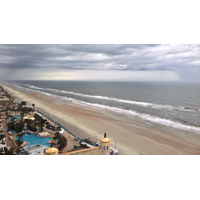
US Invests $3.9 Million for Ocean-based Climate Resilience Accelerators
, equaling a total investment of $3.9 million.AlaskaAlaska Oceans 2075: Accelerating a Resilient Future, Alaska Fisheries Development Foundation, $249,540.CaliforniaActivate Oceans Fellowship, ACTIVATE GLOBAL Inc., $202,431.StartBlue Climate Ocean Resilience Accelerator Launchpad (CORAL), University of California San Diego, $250,000.FloridaCatching the Blue Wave: Accelerating America’s Ocean Economy, Tampa Bay Wave, Inc., $250,000.The Upwell Collaborative Accelerator, Seaworthy Collective, $249,848.HawaiiHITIDE Studio: Guiding the Commercialization Voyage of Ocean-Based Climate Resilient Technologie
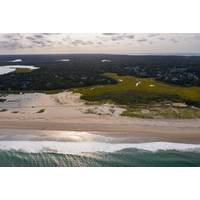
US Awards $6.7 Million for Sea Level Rise and Coastal Resilience Research
backshore dune environments in the Pacific Northwest.(IRA-funded) University of Georgia, U.S. Geological Survey and Embry-Riddle Aeronautical University received $500,000 to model nature-based flood mitigation projects to inform holistic coastal planning in the Gulf of Mexico coast.(IRA-funded) University of California, Irvine and University of Miami received nearly $500,000 to evaluate how nature-based solutions can empower more equitable flood risk management in Los Angeles County, California.(IRA-funded) George Mason University, The Nature Conservancy, Resources for the Future and Maryland Department
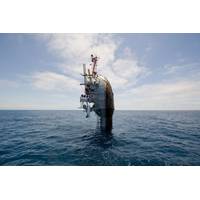
US Navy-owned FLIP Research Platform Retired from Service
exorbitant life-extension costs resulted in the platform being disestablished.On Aug. 3, a solemn gathering of well-wishers watched as FLIP was towed, at sunset, to a dismantling and recycling facility. Last month, a formal good-bye ceremony was hosted by the Marine Physical Laboratory at the University of California, San Diego (UCSD).Still, FLIP — which was owned by the U.S. Navy and managed by Scripps Institution of Oceanography at UCSD — boasts a proud legacy and represents a golden age of oceanography that saw a renewed focus on ocean exploration, the creation of new fields of study,

Singapore to Expand Ocean CO2 Removal Project as Scientists Call for More Research
allowing it to absorb more greenhouse gas from the atmosphere when it is pumped back out into the ocean.The project, built at a desalination facility on Singapore's western coast, extracts 100 kilograms of CO2 a day using technology designed by U.S. firm Equatic, founded by scientists at the University of California, Los Angeles (UCLA).At the plant, seawater is run through an electrolyzer, which converts dissolved CO2 into calcium carbonate and produces hydrogen.PUB is aiming to secure funds by the end of the year to build a demonstration plant with a daily capacity of 10 tons, and will look at expanding
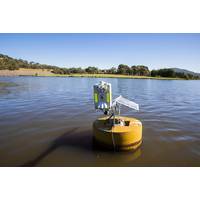
CSIRO Aims to Create a 'Weather Service' for Water Quality
of Things); University of Queensland (Reef Catchments Science Partnership, Joint Remote Sensing Research Program and Remote Sensing Research Centre); and international collaborators including CSIRO Chile; Hanoi University of Mining and Geology; Swinburne University of Technology Sarawak Campus; University of California, Davis; University of California, Merced; Vietnam’s National Center for Water Resources and Investigation

Interview: Harry Stewart, President & CEO, The Dutra Group
I can recall thinking ‘this is kind of boring, running a tractor, pulling a disc or a plow in the dust and the heat. I decided there's got to be something better.”With a strong work ethic now ingrained, Stewart set his course on engineering, earning an engineering degree from the University of California, Davis. It was his roots that led him to the doorstep of Dutra and a long, successful career.“It was the year after I graduated that I was out at my family farm, which is adjacent to a river. There was a problem with the levee, and there was a construction company (Dutra) that the
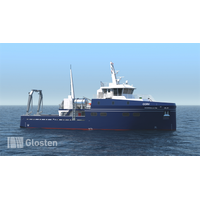
ABS to Class Scripps' New Research Vessel
A hydrogen-fueled research vessel commissioned by the University of California San Diego’s Scripps Institution of Oceanography will be built to ABS Class.Designed by Glosten, the vessel will feature a new hydrogen-hybrid propulsion system that integrates hydrogen fuel cells alongside a conventional diesel-electric power plant, enabling zero-emission operations. The design is scaled so the ship will be able to operate 75% of its missions entirely using hydrogen. For longer missions, extra power will be provided by diesel generators.The 150-foot vessel will be equipped with advanced instruments
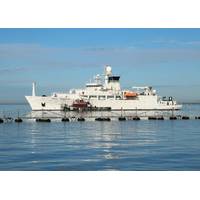
US Navy to Name Oceanographic Survey Ship USNS Robert Ballard
central role and continues to do so to this day,” said Dr. Robert Ballard. “It is indeed an honor to know that the USNS Robert Ballard will continue to explore the oceans long after I am gone.”Ballard was born in 1942, growing up in San Diego, Calif. After he graduated from the University of California, Santa Barbara, in 1965, he earned an Army Reserve Commission, ultimately requesting and transferring to the United States Navy when called to active service in 1967. Assigned to the Office of Naval Research as a liaison officer at Woods Hole Oceanographic Institution in Massachusetts, Ballard
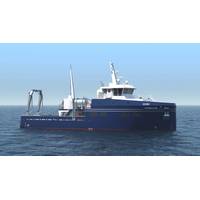
Glosten Tapped to Design Scripps' New Hydrogen-hybrid Research Vessel
, leaders and policymakers. It is envisioned that the vessel will carry up to 45 students and teachers to sea on day trips, improving the university’s capacity for experiential learning at sea. The new vessel will replace research vessel Robert Gordon Sproul, which has served thousands of University of California students in its 42 years of service but is nearing completion of its service life.“Scripps Institution of Oceanography’s hydrogen-hybrid coastal research vessel is a significant demonstration of California's commitment to fighting climate change, decarbonizing our blue economy



 February 2024
February 2024





